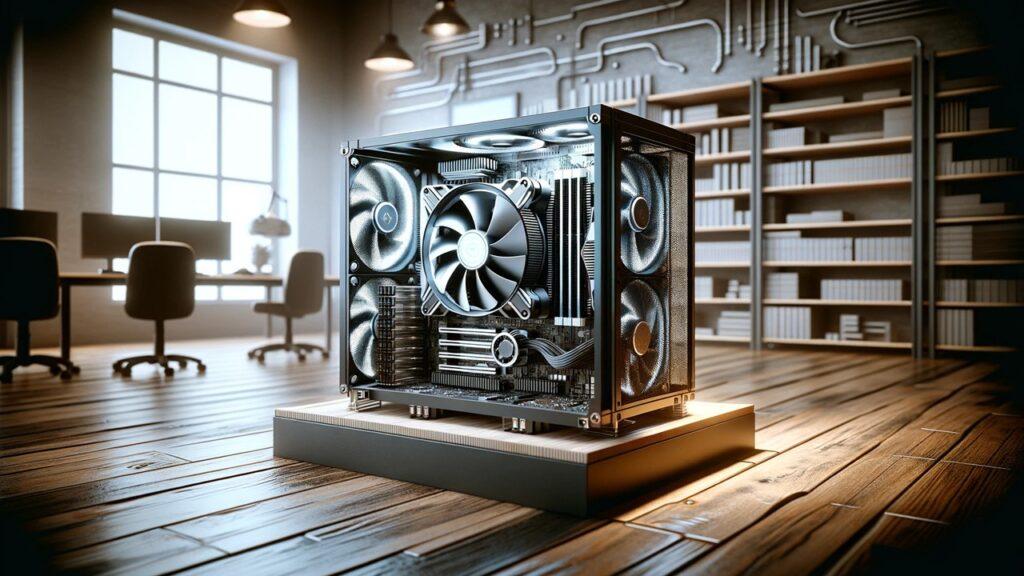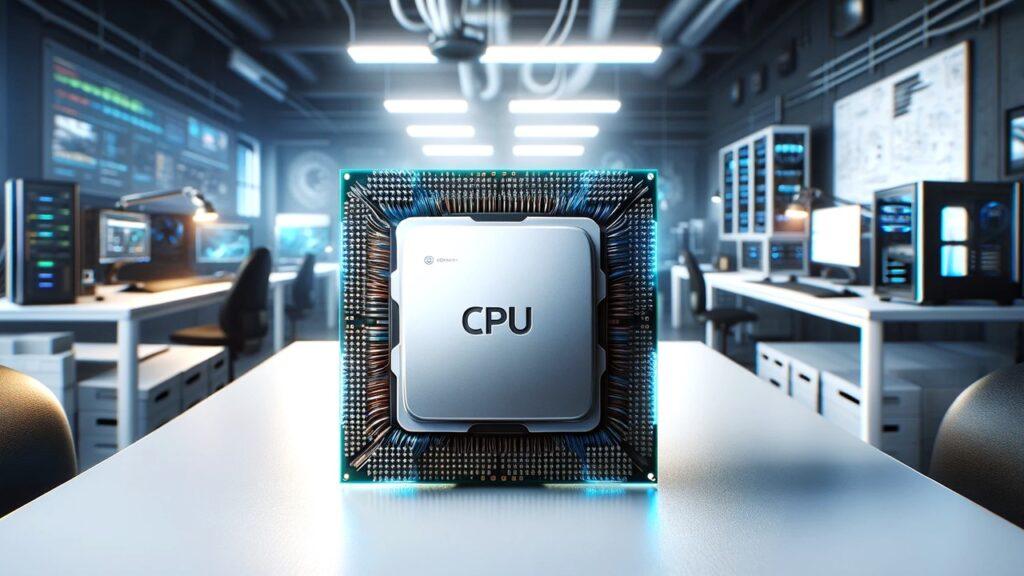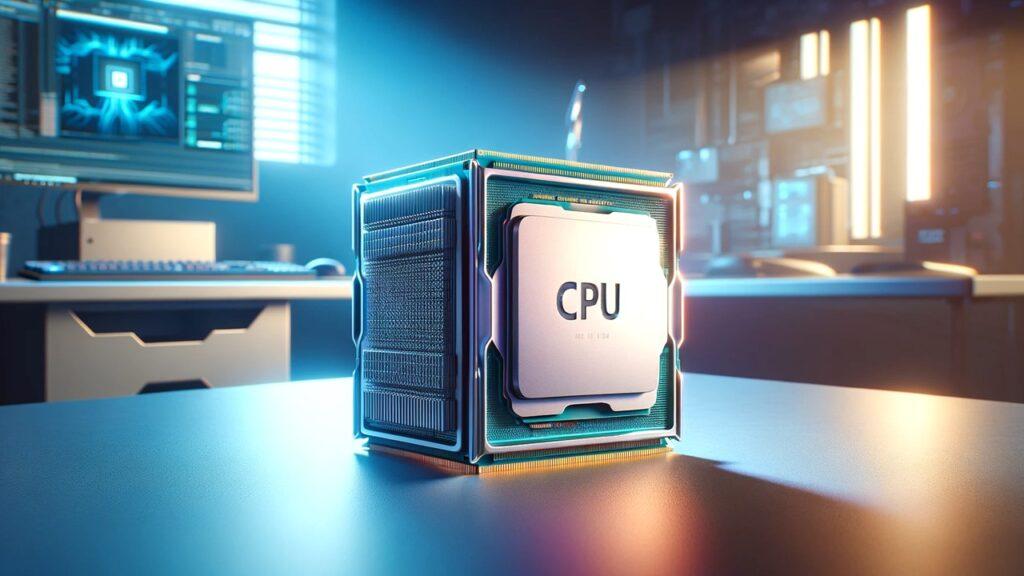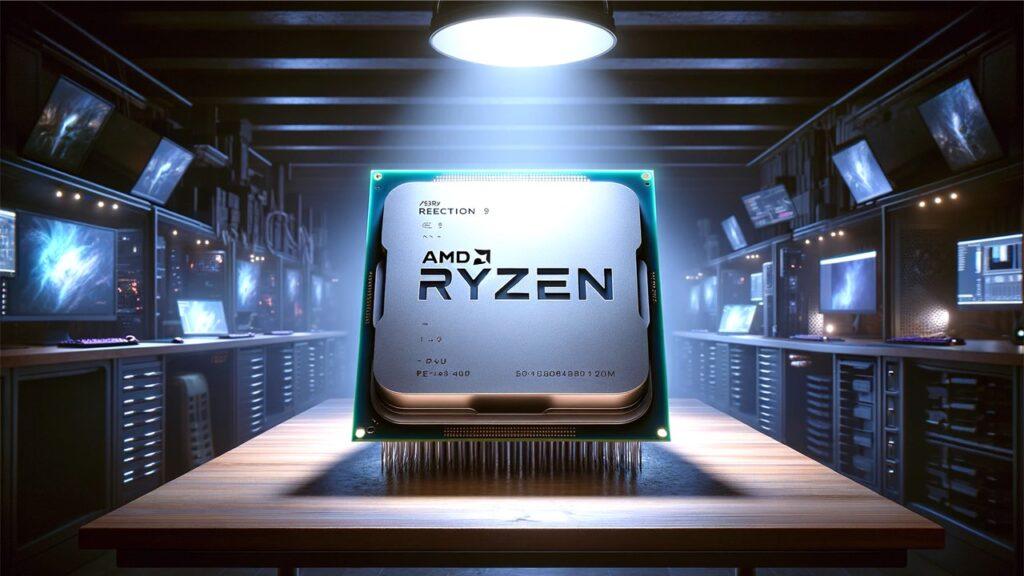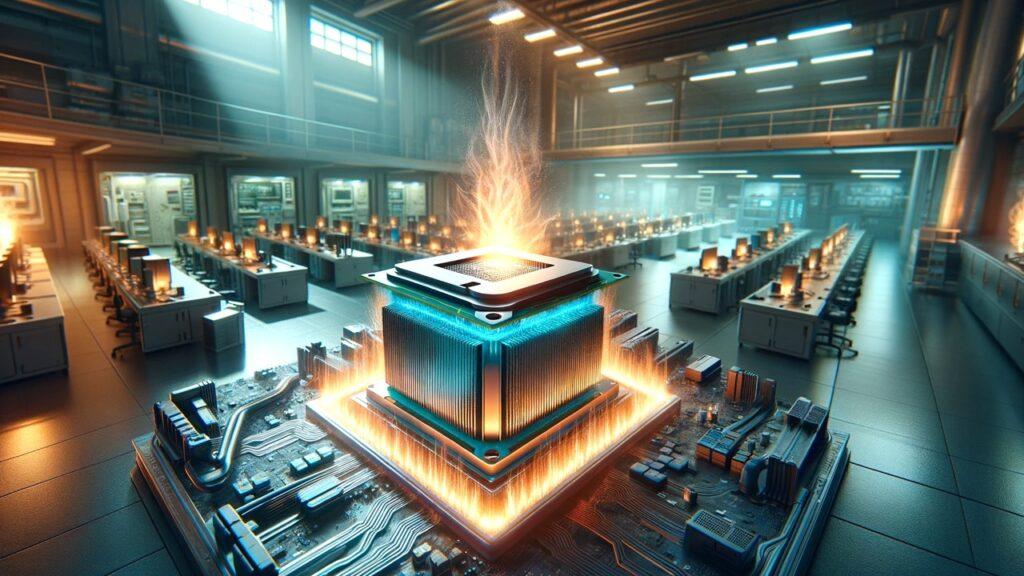
Ever wondered why keeping your CPU at the optimal temperature is crucial? Well, stick around because in this step-by-step guide to resolving CPU overheating issues, we’re diving into just that. Whether you’re gearing up for a marathon gaming session or juggling heavy-duty processing tasks, keeping your CPU temperature in check is crucial. We are going to cover everything from the key reasons why your processor might be getting too hot, to the downright disruptive consequences of letting things simmer for too long. If you’re ready to prevent those unexpected shutdowns and performance hiccups, you’re in the right place. So, buckle up—by the end of this post, you’ll be equipped with all the know-how to keep those temperatures down and your computing experience smooth.
What Causes CPU Overheating?
Ever wondered why your CPU turns into a mini furnace? It’s not just about pushing it to the limits; several factors contribute to CPU overheating. Understanding these can help you prevent potential overheating before it becomes a serious issue.
Poor Ventilation and Airflow
Let’s start with the basics: ventilation. How your system’s case is designed plays a pivotal role in airflow, which is critical for cooling. A well-designed case with strategically placed fans significantly lowers the CPU temperature. Moreover, environmental factors like room temperature and setup location also impact your system’s ability to cool itself. A cramped gaming setup or a dusty office can spell trouble for your system’s thermals.
Inadequate Cooling Systems
Moving on, the battle between air and liquid cooling systems is worth noting. Each has its benefits and pitfalls, from the simplicity and cost-effectiveness of air coolers to the superior cooling capabilities and complexity of liquid setups. Common installation mistakes, such as improper seating or poor thermal paste application, can render even the best coolers ineffective. Ensuring your cooling system is up to the task is fundamental to maintaining optimal CPU temperatures.
High CPU Usage and Overclocking
High CPU demand from tasks like 4K video editing or intense gaming sessions naturally increases temperature. CPUs for overclocking can push your CPU beyond its intended limits, often leading to significant heat generation. Without proper cooling, this can quickly go from a performance boost to a major problem. It’s crucial to balance the demands you place on your CPU with the cooling capacity of your system.
Furthermore, understanding these causes and addressing them proactively can drastically reduce the risk of overheating. By optimizing airflow, upgrading cooling systems, and managing CPU demands, you ensure your system stays cool under pressure, maintaining performance without compromising on longevity.
Taking the time to diagnose and understand the causes of CPU overheating can save you from the headache of dealing with performance drops and system failures. Keep these tips in mind to keep your CPU cool and your computing experience smoother.
How to Diagnose CPU Overheating
Recognizing when your CPU is overheating is your first line of defense against potential system failures and sluggish performance. This crucial step not only extends the life of your computer but ensures it operates at peak efficiency. So, let’s jump right into the methods to diagnose these hot issues effectively.
Monitoring Your CPU Temperature
First up, keeping an eye on your CPU temperature is easier than you might think, thanks to a plethora of tools and software designed for temperature monitoring. Whether you’re using a basic BIOS interface or advanced third-party software, these tools provide real-time temperature stats that are essential for catching heat issues early. Understanding what these numbers mean is just as crucial as viewing them. Normal operating temperatures vary, but anything consistently pushing the upper limits demands attention and action.
Identifying Symptoms of Overheating
Beyond the digital readouts, your computer will tell you when it’s feeling the heat. From physical signs like excessive fan noise or a hot case to performance issues such as frequent crashes and sluggish response times, these are all red flags. Additionally, modern systems come equipped with safety mechanisms and error messages specifically designed to alert you before a meltdown occurs. Paying attention to these warnings can save you from more than just a system crash; it can prevent irreversible damage to your precious components.
Understanding these symptoms and monitoring tools not only prevents damage but also boosts your system’s efficiency and longevity. By keeping your CPU cool, you’re ensuring it runs smoothly, even under pressure.
Step-by-Step Solutions to Cool Down Your CPU
Cooling down your CPU isn’t just about slapping on a bigger fan and calling it a day. It’s about understanding the symphony of components and environmental factors that keep your CPU at a healthy temperature. Let’s walk through a series of steps that will guide you through the process, ensuring that your computer not only runs cooler but also performs better and lasts longer.
Step 1: Optimize Airflow in Your Case
Start by reevaluating the airflow within your PC case. Is air moving freely, or are cables and other components obstructing it? Reorganizing the interior and securing cables to the sides can dramatically improve air movement. Adding or rearranging case fans to create a balanced airflow—intake at the front and bottom, exhaust at the top and rear—can make a significant difference.
Step 2: Upgrade Your CPU Cooler
If your current cooler isn’t cutting it, consider upgrading to a more efficient model. For high-demand systems, a high-performance AIO liquid cooler might be necessary, especially if you’re into overclocking or heavy-duty tasks like 4K video editing. Ensure the cooler is compatible with your motherboard and adequately sized for your case.
Step 3: Apply Thermal Paste Correctly
A simple yet often overlooked step is the application of thermal paste. This thermally conductive paste helps transfer heat from the CPU to the cooler. When applying, a pea-sized amount in the center of the CPU is typically sufficient—too much can actually hinder heat transfer. It’s a good idea to replace the thermal paste annually or biennially.
Step 4: Adjust BIOS Settings for Better Cooling
Dive into your BIOS settings to ensure that thermal management is optimized. Adjust fan curves so they react appropriately to temperature changes. Enabling features like Enhanced Intel SpeedStep or AMD Cool ‘n’ Quiet can also help reduce heat output by dynamically adjusting power usage and processor speed based on load.
Step 5: Consider Environmental Factors
Don’t overlook the placement of your PC. Keeping it in a cool, well-ventilated area away from direct sunlight or heat sources can prevent ambient temperatures from raising internal temperatures. Furthermore, ensure the room has adequate air conditioning, especially in warmer climates.
Step 6: Regularly Clean Your Computer
Dust build-up can significantly impede airflow and insulate components, causing temperatures to rise. Regularly cleaning the interior of your PC, particularly the fans and air filters, can help maintain optimal cooling performance. This is particularly important for systems with budget CPU air coolers or in dusty environments.
Step 7: Monitor and Adjust as Needed
Finally, continuous monitoring with software tools can help you keep an eye on temperatures and adjust as needed. If temperatures begin to creep up, revisit these steps to identify what might have changed or degraded, such as the thermal paste drying out or a fan failing.
Keeping your CPU cool is an ongoing task that benefits greatly from regular maintenance and a proactive approach to system management. By following these steps, you not only enhance your system’s performance but also extend its lifespan. Each component from DDR5 RAM for gaming to NVMe SSDs for fastest boot times relies on a stable environment to operate efficiently. So take the time, follow these steps, and keep your computer cool under any load.
Preventive Measures to Avoid CPU Overheating
When it comes to keeping your CPU cool, an ounce of prevention is worth a pound of cure. By implementing a few strategic habits, you can significantly reduce the risk of overheating, ensuring that your system operates efficiently and extends its lifespan. Let’s explore some proactive steps to keep the heat at bay.
Step 1: Establish a Regular Cleaning Routine
Dust and debris are the enemies of efficient cooling. Establishing a routine to clean your PC can prevent dust from blocking crucial airflow paths and insulating components, which increases heat. Aim to clean your computer every three to six months; use compressed air and soft brushes to gently remove dust from fans, heatsinks, and other components.
Step 2: Optimize Your System’s Cooling Strategy
Review and optimize your system’s cooling setup periodically. This includes checking that all fans are working correctly and are properly configured to support optimal airflow—intake at the front and exhaust at the rear or top of the case. Upgrading to high-performance AIO liquid coolers or adding additional case fans might be necessary, especially if you’ve upgraded your hardware or live in a hot climate.
Step 3: Monitor Ambient Room Temperature
Keep your computer in a cool, dry, and well-ventilated area. Avoid placing your PC near heat sources such as radiators or in direct sunlight. Managing the room temperature can also be as simple as using air conditioning during hot months, which helps maintain a conducive environment for your electronics.
Step 4: Update Your Hardware Accordingly
Older components may not be as efficient in managing heat. Upgrading to modern hardware like DDR5 RAM for gaming or NVMe SSDs for fastest boot times can decrease the overall thermal load of your system because newer technology tends to operate more efficiently and generate less heat.
Step 5: Use Quality Thermal Interface Materials
High-quality thermal paste or pads can improve the heat transfer between your CPU and its cooler. Reapply thermal paste every couple of years or whenever you remove and reinstall the heat sink. This ensures optimal heat conduction and can substantially lower CPU temperatures.
Furthermore, adopting these preventive measures can transform how your system handles heat, which is especially crucial when pushing your machine to its limits with activities like gaming or 4K video editing.
When to Seek Professional Help?
Knowing when to call in the experts is crucial in maintaining not just the performance but also the safety of your computer. Let’s discuss when it’s time to move beyond DIY fixes and consult with a professional.
Professional assistance becomes necessary when you’ve tried all standard troubleshooting steps without success. If overheating persists despite cleaning, upgrading coolers, and optimizing airflow, it might indicate a deeper hardware issue. Signs that require professional attention include frequent system crashes, blue screens, or even smoke or a burning smell from your PC. These symptoms can suggest serious problems that might not be safe to handle on your own.
Moreover, if you’re unsure about how to properly install cooling systems or apply thermal paste, it might be safer and more effective to let someone with more experience take the lead. This is particularly true for high-end setups involving overclocking CPU or custom-built systems where precise configurations are crucial for optimal performance.
Additionally, professionals can offer insights into the latest cooling technologies and how they might benefit your specific setup. Whether you’re running AMD Ryzen CPUs for gaming or Intel Core CPUs for intensive creative tasks, a tailored approach can make a significant difference.
Keeping your CPU cool involves a combination of regular maintenance, strategic upgrades, and smart practices. But when things get too hot to handle, knowing when to seek professional help can save you time, money, and potentially your entire system. Stay cool, and your computer will reciprocate in performance and reliability.
Wrapping It Up!
As we wrap up our comprehensive guide on step-by-steps to resolving CPU overheating issues, let’s recap the key strategies to keep your CPU cool and functioning efficiently. These steps are not just about immediate fixes but about fostering a system that stands the test of time, ensuring your computing experience remains smooth and reliable.
Effective cooling of your CPU hinges on a mix of proactive measures and regular maintenance. From optimizing airflow in your PC case to regularly updating and monitoring your hardware, each step plays a pivotal role in maintaining optimal temperature. Remember, the goal is to prevent heat from becoming a problem in the first place, which means keeping an eye on both the physical and environmental factors that influence your system’s temperature.
Moreover, consistent monitoring helps you catch potential issues before they escalate into serious problems, ensuring your CPU runs at its best. By investing time in these practices, you’re not just safeguarding your hardware; you’re also ensuring that performance stays top-notch, whether you’re gaming, editing, or simply browsing the web.
In essence, think of your CPU as the heart of your computer—keeping it cool keeps your system healthy. And just like any good maintenance routine, the key is regularity. Stay vigilant, stay informed, and your CPU will thank you with years of optimal performance.
Related FAQs
What Is The Ideal Operating Temperature For A CPU?
The ideal range is 30-70°C under normal loads.
Can Overclocking Damage My CPU?
Yes, without adequate cooling, overclocking can shorten a CPU’s lifespan.
How Often Should I Replace Thermal Paste?
Typically, every 2-3 years or when temperatures seem unusually high.
What Are The Signs Of An Overheating CPU?
Frequent crashes, slowdowns, and unexpected shutdowns are common signs.
Does Room Temperature Affect CPU Heat?
Yes, higher ambient temperatures can significantly impact CPU temperature.

At our core, we’re a group of passionate tech lovers, just like you. We dive deep into the world of tech, especially when it’s about building PCs that perform. We try to provide as much value to the readers with our information and how to blog articles as possible. For affiliate articles our honest and transparent reviews of essential tech products are rooted in real-world experience. We take great satisfaction in offering unbiased evaluations, ensuring that you can make informed decisions when investing in your desired techs. As an affiliate website, we may earn a small commission from some of the products we feature. However, rest assured that our opinions are not influenced by this, and your trust is always our main priority.

